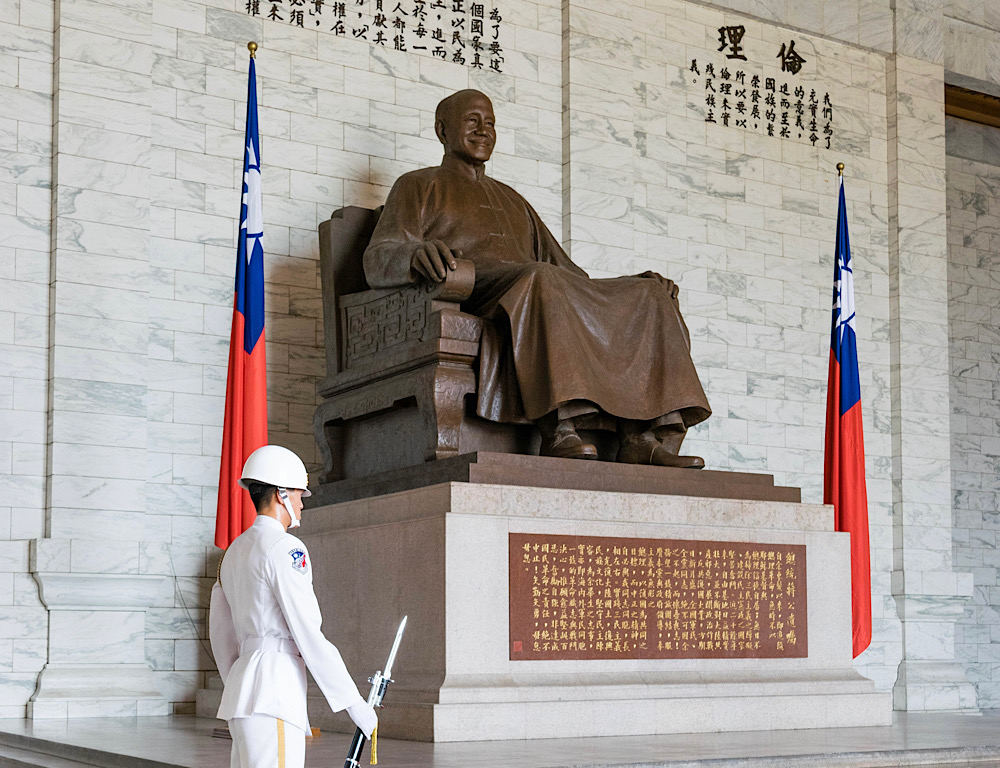Taiwan to speed up 'controversial' removal of Chiang Kai-shek statues
The island is covered by more than 760 statues dedicated to the late leader, from public places to military academies (where he is honoured). For critics, their removal is an attempt to "erase" the past and ties with the mainland. But Chiang’s legacy is tainted by the massacres in several incidents that have never been explored in depth by historians. Meanwhile, his great-grandson Chiang Wan-an, as mayor of the capital, is looking for ways to become a future president.
Taipei (AsiaNews) – Taiwan plans to remove about 760 statues of the late Chiang Kai-shek from public places, a decision that critics say constitute an attempt to "erase" the past and ties with mainland China.
The controversy over Chiang’s statues goes back almost 25 years and is one of the points of confrontation between the ruling, pro-independence Democratic Progressive Party (DPP), and the main opposition Nationalist Party, the Kuomintang (KMT), which supports unification with the mainland.
Chiang led the island for almost 30 years, but his legacy is marred by several controversial and violent incidents, such as the so-called 228 Incident and the subsequent White Terror.
A government official yesterday told Taiwan’s parliament (Legislative Yuan) that the Interior Ministry plans to remove more than 760 statues of Chiang still on the island, which is considered a "rebel" province by mainland China.
The ministry will coordinate the removal with local and central governments, said Shih Pu, deputy director general of the Department of Human Rights and Transitional Justice.
DPP lawmaker Huang said the government provided subsidies worth NT$ 100,000 (about US$ 3,000) to relevant units to remove the statues, but only 165 of the 934 listed statues had been pulled down.
The slow pace of removal was due to the military dragging its feet. “The Defence Ministry has said it needs to take into account the military tradition,” Shih said, a reference to the fact that Chiang is considered the founder of the island’s military academy.
Before that he was superintendent of the Whampoa Military Academy in Guangdong province in 1924, and went on to re-establish the institution in Taiwan in 1950.
Last week, Defence Minister Chiu Kuo-cheng explained that it is a military tradition to honour Chiang while statues of him on military bases are considered private property.
Huang Kwei-bo, a professor of diplomacy at Taipei's Chengchi National University, said the DPP government appears to be trying to speed up its "de-sinicisation" efforts by tearing down statues.
James Yifan Chen, a professor of diplomacy and international relations at Tamkang University in New Taipei, said the ruling party is pushing for the statues to be removed ahead of the newly established White Terror Memorial Day.
Last Friday, the government approved a decree making 19 May a Memorial Day for the period of political repression under Chiang's regime, with commemorations on the day before the inauguration of William Lai Ching-te as the new president of Taiwan.
The figure of Chiang, who led the island for almost three decades until his death in 1975, is still a bone of contention for his role in the 228 Massacre and the period of White Terror, while the Kuomintang accuses the government of trying to deny the past.
Commander of the Nationalist army in China’s civil war against the Communists, Chiang fled to Taiwan after his forces were defeated. On the island, he held power until he died.
Since the rise of the DPP after the end of the KMT's 51-year rule, the government has begun to remove statues everywhere, in parks, streets, and military buildings.
The 228 incident refers to events that occurred on 28 February 1947 in Taipei, when police opened fire on protesters, killing scores of people. This sparked an uprising that was crushed by the army at the cost of tens of thousands of lives and mass arrests.
In Taipei, soldiers shot anyone on the street and people were taken from their homes.
Martial law lasted until 1987 and was lifted only under international pressure, including from the United States, but for years even talking about what happened was banned.
There is still no official version of events. However, more and more voices blame Chiang for the massacre and accuse him of using the subsequent period of White Terror to eliminate dissidents and pro-democracy activists (140,000 Taiwanese were imprisoned or killed).
The clash around the figure of the elderly stateman is not only a point of debate among historians, because one of his descendants is a major figure in Taiwanese politics.
Chiang Wan-an, 44, has been the mayor of Taipei since December 2022, and could be a contender in the 2028 presidential elections. His original surname was Chang, but it was changed to honour his famous ancestor when his father revealed the connection to the old leader.
Since 1996 three of the island's last four presidents – Lee Teng-hui, Chen Shui-bian and Ma Ying-jeou – have been Taipei's first citizen.
Analysts note that Chiang Kai-shek is used more by the DPP against its rivals, to emphasise its different origin and orientation, rather than by the Kuomintang, heir to a founder whom they neither disown, nor celebrate, at least until now.
With the arrival of Chiang Wan-an on the political scene, combined with the controversy over the statues, the past could again be a source of conflict and lead to a historical revision of a time that was never fully analysed.
What is more, the political ambition of the great-grandson and his rapid rise to lead the capital could mark the comeback of the Chiang dynasty.
31/07/2020 10:59







.png)










